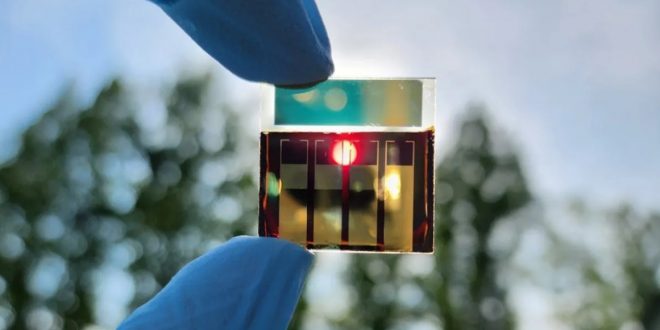South Korean researchers recently made progress in the field of semi-transparent perovskite solar cells, which could eventually allow windows to produce energy. The semi-transparent perovskite solar cells recently reached an efficiency exceeding 21 percent, setting a new record for this technology, according to the researchers. Moreover, more than 99% of the original efficiency was sustained for a duration of 240 hours.
The Korea Institute of Energy Research (KIER) has introduced a novel solar cell technology that substitutes traditional metal electrodes with transparent electrodes, enabling light penetration.
Executing this process is more challenging than discussing it. Initial tests with semi-transparent materials led to decreased charge-transporting properties and stability for reasons that remain unknown. Analyzing the material involved using electro-optical analysis and atomic-level computational science.
It was discovered that the issue was being caused by lithium ions. Lithium ions are introduced into the hole transport layer of the solar cell to enhance conductivity. However, they also migrate into the metal oxide layer, acting as a buffer, leading to a decline in its beneficial properties.
In order to address the issue, the lithium ions were transformed into stable lithium oxide, resulting in increased stability of the cell.
“This study is a notable advancement in the field as it investigates the degradation process at the interface of organic compounds and metal oxide buffer layers specific to semi-transparent perovskite solar cells,” stated Dr. Ahn SeJin, head of the research team at KIER’s Photovoltaics Research Department.
“Our solution is easily implementable, showcasing significant potential for the future application of our developed technologies.”
Solar energy has the potential to play a significant role in the shift from fossil fuels. Nevertheless, the existing solar cell technology has various drawbacks. One significant issue pertains to the materials used, which may be costly, ineffective, and difficult to acquire.
Another consideration is the placement of solar panels. To harness significant solar energy, a large number of solar panels are required, which may not appeal to everyone visually.
Engineers and designers strive to discover innovative methods for integrating solar cells that harmoniously merge with their surroundings. It is proposed that semi-transparent perovskite solar cells could be integrated into glass-paneled buildings to allow light in and generate electricity discreetly.
Significant progress has been made towards incorporating sun-soaking windows into residential and commercial buildings, although widespread adoption is still pending.
The latest research appears in the Advanced Energy Materials journal.
 Tech Gadget Central Latest Tech News and Reviews
Tech Gadget Central Latest Tech News and Reviews




